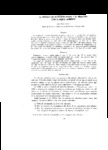El método de selección masal y su relación con el medio ambiente
Abstract
Se estudian las varianzas fenotípicas de planta a planta en la variedad Qro. VI cuando un lote de selección masal se establece a 60, 70 y 80 mil plantas por hectárea y con aplicaciones de 0, 80 y 160 kg de nitrógeno por hectárea. A mayor densidad de plantas por hectárea corresponden menos varianzas i.e.: 842, 714 y 652 respectivamente, en tanto que a mayor aplicación de nitrógeno corresponde mayor varianza i.e.: 616, 759 y 805 respectivamente. Estos cambios observados en la varianza fenotípica se interpretan en términos de competencia y de las componentes del fenotipo i.e.: hereditario, ambiental y de interacción genético-ambiental. Se discuten las condiciones óptimas para el establecimiento de los lotes de selección masal. ABSTRACT: Phenotypical variances among plants of corn of the variety Qro. VI are studied when sown in populations of 60,000, 70,000 and 80,000 plant per hectare. also, different dosis of Nitrogen were applied: 0, 80 and 160 kilograms per hectare. The bigger the population the smaller the variance among plants, i.e.: 842, 714 and 752 respectively, while the bigger the dosis of Nitrogen, the bigger the variances among plants, i.e.: 616, 759 and 805 respectively. These changes of the phenotypical variance are interpreted as results of competence and of the components of the phenotype i.e. heredity, environmental, and of the genetical-environmental interaction. Optimum conditions for the establishment of mass selection plots are discussed.
Collections
- Agrociencia [55]

